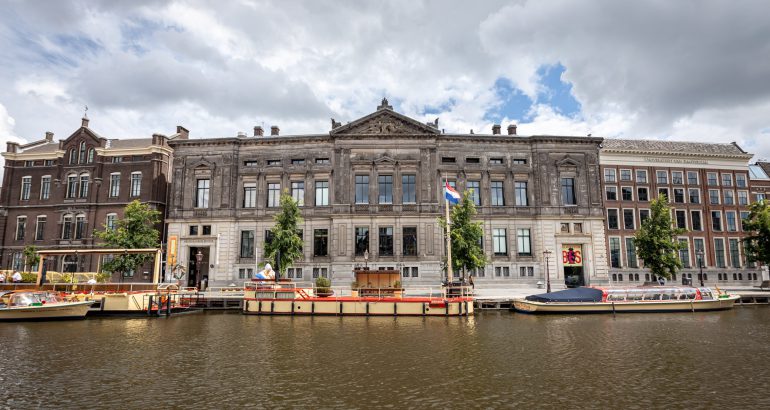The University of Amsterdam has its very own museum, the Allard Pierson Museum. Now on show: Amsterdam Eats. A History in Dishes and Glass, made in Antiquity.
The Allard Pierson collects, manages, researches and exhibits valuable and significant cultural heritage, ranging from ancient times to the present day. The collections are accessible to everyone, serving the purposes of science, education, and inspiration. In the Allard Pierson’s permanent archaeology collection, you can easily spend hours exploring the galleries dedicated to the Greek and Roman world. Be amazed by the reconstruction of an Etruscan tomb from Italy, full of pottery vessels. A separate gallery focuses on the culture of Egyptian Christians during the early Middle Ages. Additionally, you can find ancient sculptures in the Plaster Gallery and maps and atlases in the GeoZone. Temporary exhibitions showcase other heritage collections.
Currently on display is Amsterdam Eats. A History in Dishes, which highlights the food history collection. In a journey spanning 750 years of food culture, you explore what has been consumed by the people of Amsterdam throughout the centuries. Cookbooks, menus, archaeological objects, manuscripts and other sources showcase the city’s culinary traditions up to the present day. It appears that the residents of Amsterdam have always possessed a ‘curious palate’. The exhibition places dishes at the forefront, ranging from everyday meals to gourmet delights, from delicacies to medicinal foods. It starts with herring, which was consumed by both wealthy and poor people during the Middle Ages, even at breakfast. The final dish featured is nasi goreng, symbolizing the variety of kitchens in the city following World War II. The exhibition emphasizes not only what was eaten but also by whom, when and where. Prints, paintings, drawings and photographs illustrate how Amsterdam’s food culture acts both as a reflection of the city and a driving force for urban growth.
In the exhibition Glass, made in Antiquity, the Allard Pierson presents more than 200 glass objects from the museum’s archaeology collection. Transparent or opaque, in vivid or muted colours, elegantly decorated and unusually shaped – it’s remarkable that such a fragile material has remained so beautiful for centuries. Equally remarkable is the craftsmanship with which these utilitarian and decorative objects were made. In recent years, the latest research methods have been used to gain deeper insight into the technical aspects of ancient glass. Visitors to the exhibition can enjoy the beauty of the collection while discovering more about the sophisticated production techniques of glass in antiquity. In addition to the antique glass objects, there are works by two contemporary artists on display. Bert Frijns (1953) and Emmy van de Grift (1998) drew inspiration from ancient glassmakers.
Curious? Visit the Allard Pierson in the heart of the city.
